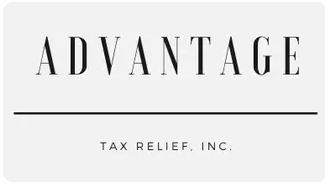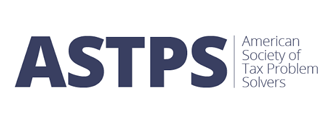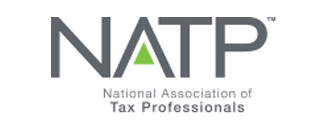Understanding a Notice of Federal Tax Lien
August 8, 2023
August 8, 2023
What to do when you receive one
Neglecting to pay your taxes can lead to serious consequences, and one of the most severe repercussions is the federal government filing a legal claim against all your current and future property through a federal tax lien.
In this article, we'll break down what a federal tax lien is and provide guidance on what steps you should take if you receive a certified letter indicating that you have one.
Please note that it's always advisable to seek the assistance of a specialized Tax Resolution Professional who can negotiate with the IRS on your behalf. If you'd like to schedule a free and confidential tax relief consultation, please contact us through our contact page
.
What is a Federal Tax Lien?
A federal tax lien is a document filed with a county government (usually where you reside or conduct business) to notify the general public that you have an outstanding federal tax debt.
How Does It Affect Your Assets?
A tax lien attaches to all your assets, including property, securities, and vehicles. It also extends to any assets you acquire in the future during the duration of the lien.
If you sell any property while a federal tax lien is in place, the IRS will be paid before you receive your share.
How Does It Affect Your Credit?
Once the IRS files a Notice of Federal Tax Lien, it becomes public record. Credit reporting bureaus often pick up this information, which means that the federal tax lien will eventually appear on your credit report and could hinder your ability to obtain credit.
How Does It Affect Your Business?
A tax lien attaches to all your business property and rights to business property, including accounts receivable. This can significantly impact your ability to run your business normally and put you further behind.
What About Bankruptcy?
Filing for bankruptcy does not automatically eliminate your tax debt or the Notice of Federal Tax Lien. These obligations may persist even after the bankruptcy process.
Is a Lien the Same as a Levy?
The terms "lien" and "levy" are often used interchangeably, but they have distinct differences. A federal tax lien represents the government's legal claim or interest in all your property. However, the IRS does not sell off or forcefully confiscate your assets. Nonetheless, having the IRS place a chain on everything you own can certainly make your life significantly more challenging.
A levy, on the other hand, refers to the enforcement of the lien through the collection of taxes. This can include actions such as seizing funds directly from your bank account or garnishing up to 75% of your net paycheck.
What Should You Do Next?
According to the IRS website, "Paying your tax debt in full is the best way to get rid of a federal tax lien. The IRS releases your lien within 30 days after you have paid your tax debt." However, for most people, writing a check for the full amount is not feasible. This is where a tax resolution specialist can be of assistance.
Contrary to the IRS's advice, your initial step should be to contact a qualified tax resolution professional, such as ourselves. Dealing with the IRS on your own is like going to court without a lawyer—it's possible, but your chances of achieving a favorable outcome are slim.
A qualified tax resolution expert can create a resolution plan, immediately communicate with the IRS on your behalf, and initiate negotiations to alleviate your tax problem.
Feel free to reach out to our firm
, and we'll be happy to schedule a confidential consultation without any obligation. During this session, we'll explain the options available to you for permanently resolving your tax problem.


October 1, 2025
It seems like natural disasters such as hurricanes, floods, earthquakes, wild fires, and tornados are happening all the time and just about everywhere. Climate change also seems to be making these disasters more deadly and more destructive. Many people do step up to help survivors with needed financial donations. The only thing worse than the disasters themselves are the scammers that exploit these situations for financial gain at the expense of hard working and well-i ntentioned survivors and donors. Like yourself! Scams can take the form of fake charities and impostors posing as legitimate organizations or government agencies. Common scams typically entail vague appeals for donations without details, fake websites with names like real charities and caller ID tricks to appear legitimate. Several warnings signs of these scammers are: 1) pressure to give immediately, often preying on your emotions and not logic 2) a thank-you for a previous donation you don’t recall making 3) a request for payment by cash, gift card or wire transfer. The last are scammers’ favored payment methods because the money is easy to access, difficult to trace and almost impossible to cancel. A legitimate charity will welcome your donation whenever you choose to make it and by whatever means you choose. A great way to verify their legitimacy is to use the IRS Tax Exempt Organization Search tool at https://apps.irs.gov/app/eos/. Additionally, clients should always ask for a receipt and then check their bank or credit card statements to ensure the donation amount is accurate. If you think you were a victim of a suspected scam, you can and should report them to the Federal Trade Commission at https://reportfraud.ftc.gov/. How Advantage Tax Relief Can Assist You At Advantage Tax Relief, based in Itasca, IL, we have over a decade of experience helping individuals and businesses resolve tax issues. Our team specializes in offering personalized tax relief and tax resolution solutions tailored to your unique needs. We will work with you to assess your situation and explore your options, whether it’s an Offer in Compromise, installment agreements, or other strategies. Our experience allows us to identify the best path forward to ease your tax burden and guide you toward financial freedom. If you're facing tax debt, don't wait. Advantage Tax Relief is here to assist you with effective, professional help. Call Advantage Tax Relief today at 630-773-3200 to schedule a consultation and take the first step toward resolving your tax issues.

August 29, 2025
First, working overtime does not mean you are getting an automatic increase in your take-home pay because it is not going to be taxed. That is not what is going to happen. The tax savings will be in the form of a tax deduction when you file your Federal tax return the following year. There will be no immediate impact. Second, it only applies for Federal income taxes. It does not include State, Social Security or Medicare taxes. Third, it also only applies to the overtime premium and within certain deduction and wage limits. You can only deduct the pay that exceeds your regular rate of pay. The 'half' portion of 'time-and-a-half' compensation. For example, say you make $20 per hour and work 5 hours of overtime that week at time-and-a-half. The deduction would the Federal tax on $50 of premium pay. ($20 divided by 2 times 5 hours) Finally, the maximum annual deduction is $12,500 for single filers and $25,000 for joint filers. The deduction phases out for taxpayers with modified adjusted gross income over $150,000 (or $300,000 for joint filers).



